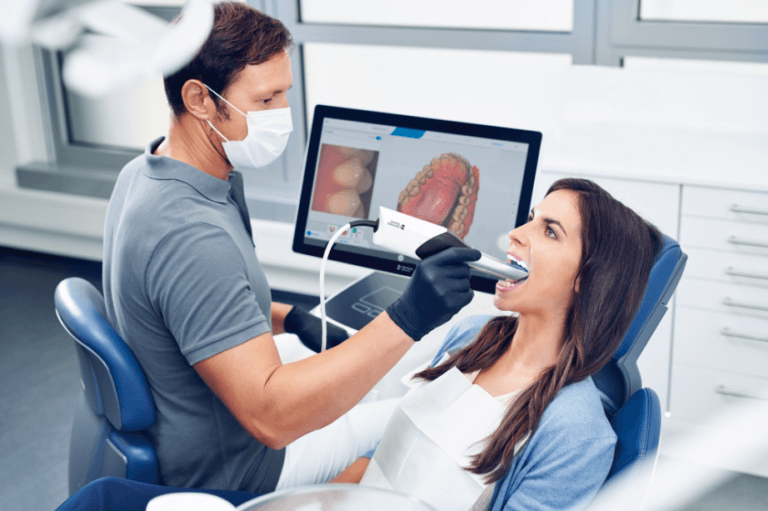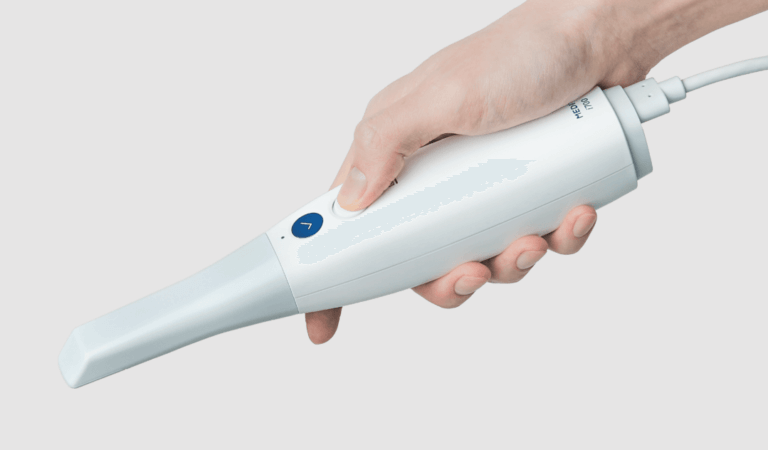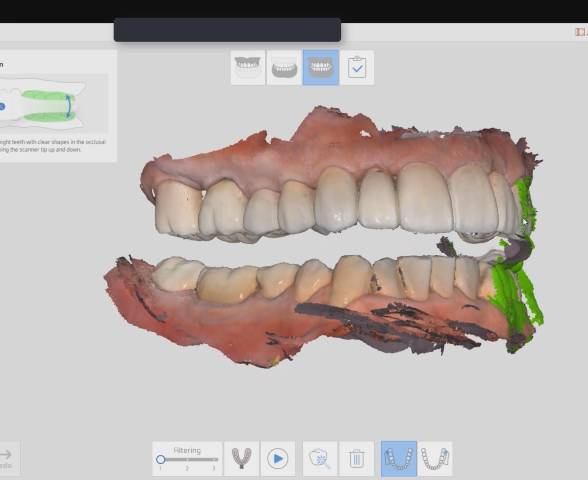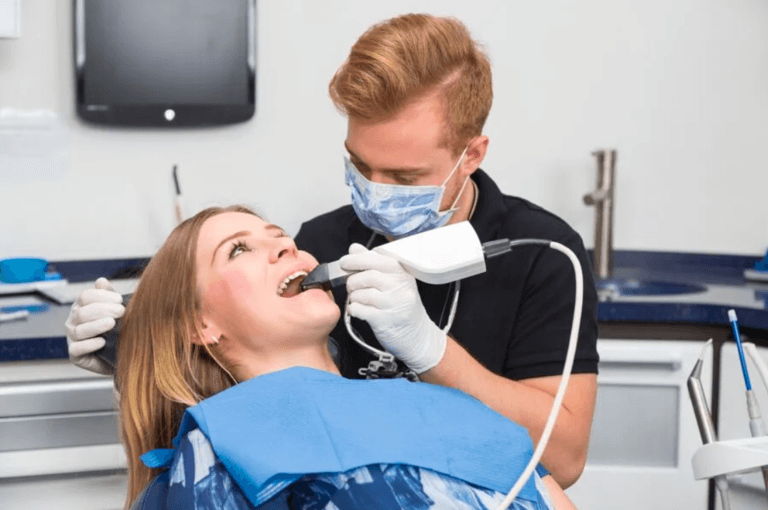Intraoral 3D Scanner

What Is an Intraoral 3D Scanner?
An Intraoral 3D Scanner is a transformative tool in modern dentistry that enables precise, digital impressions of a patient’s teeth and gums. Unlike traditional dental molds, which require impression materials that can cause discomfort, intraoral scanners capture digital images of the oral cavity using advanced imaging technology. The scanner is a small, handheld device shaped like a wand, allowing dentists to create detailed 3D models of a patient’s teeth, gums, and bite. This digital approach streamlines diagnosis, treatment planning, and the creation of dental appliances, improving both accuracy and patient comfort.
Before deciding on whether Intraoral 3D Scanning are right for you, there are some things you should know:
- Popular Brands of Intraoral 3D Scanners
- Procedures Benefiting from Intraoral 3D Scanning
- Advantages of Intraoral 3D Scanning
- Steps in the Intraoral 3D Scanning Procedure
- Frequently Asked Questions About Intraoral 3D Scanning
If you have any further questions about Intraoral 3D Scanning or other dental services offered at Atlas Dental, please contact us.

Free phone consultation
Have questions about CBCT Scans? Schedule a free phone consultation with our Toronto dentist.

5 star google reviews
Our patients love us! See for yourself why more and more people are choosing Atlas Dental for their CBCT Scans.

Book CBCT Scan Online
We provide quick and convenient CBCT Scan Service in Toronto. Book Online.
Popular Brands of Intraoral 3D Scanners
Several brands provide intraoral scanners with unique features and strengths. Here are a few well-known options:
- Medit: Known for speed and precision, Medit scanners are widely used in dental clinics and laboratories.
- 3Shape Trios: These scanners offer advanced technology and user-friendly interfaces suitable for various dental applications.
- iTero (Align Technology): Popular in orthodontics, especially for Invisalign, iTero scanners provide highly accurate scans for clear aligner therapy.
- Primescan (Dentsply Sirona): Primescan scanners enable same-day restorations through their CEREC platform, ideal for practices focused on efficient, chairside solutions.
- Kulzer: Known for high-resolution imaging, Kulzer scanners help dentists achieve precise treatment outcomes.
- Planmeca: These scanners are versatile, providing excellent detail for a broad range of procedures.
Each brand offers features catering to specific needs, and dental professionals choose based on practice requirements, compatibility, and preferences. If you have further questions about Intraoral 3D Scanner, please contact us.

Procedures Benefiting from Intraoral 3D Scanning
Intraoral 3D scanning has applications across many dental procedures, transforming patient experience and treatment accuracy:
- Invisalign and Other Clear Aligners: The scanners provide highly detailed digital impressions for designing clear aligners that accurately guide teeth into position.
- Restorative Dentistry: For crowns, veneers, inlays, onlays, and bridges, intraoral 3D scanners allow dentists to create precise digital impressions, ensuring restorations that fit comfortably and look natural.
- Dental Implants: By capturing accurate data for implant planning, intraoral scanners help achieve precise placement and crown creation when combined with CBCT scans.
- Dentures and Removable Retainers: Intraoral 3D scanning captures accurate oral contours, allowing for comfortable dentures and retainer fittings.
- Smile Design and Cosmetic Procedures: Scanners aid in designing and visualizing aesthetic enhancements, from veneers to other smile makeover procedures.
This technology supports detailed digital models that allow dentists to diagnose, plan, and execute treatments with accuracy. If you have further questions about Intraoral 3D Scanner, please contact us.

Advantages of Intraoral 3D Scanning
Intraoral 3D scanning provides numerous benefits, making it a valuable tool in modern dentistry:
- Enhanced Accuracy: Intraoral scanners capture intricate oral details, leading to precise diagnoses, better-fitting restorations, and fewer adjustments.
- Patient Comfort: The digital process eliminates the need for impression materials, making it more comfortable, especially for patients with sensitive gag reflexes.
- Time Savings: Scanning is quicker than traditional impressions, allowing more efficient appointments and reducing chair time.
- Real-Time Visual Feedback: Both patients and dentists can see detailed images on-screen immediately, improving communication and understanding of treatment options.
- Digital Storage: Scanned images can be saved and referenced in the future, simplifying record-keeping and improving continuity of care.
- Reduced Environmental Impact: By eliminating the need for physical impression materials, intraoral scanning contributes to more eco-friendly dental practices.
The convenience, precision, and comfort of intraoral 3D scanning make it a preferred choice for patients and practitioners alike. If you have further questions about Intraoral 3D Scanner, please contact us.
Steps in the Intraoral 3D Scanning Procedure
The process of intraoral scanning includes a few essential steps, providing patients with an efficient, comfortable experience:
- Preparation and Isolation: The patient’s mouth is prepared by keeping the field dry to ensure scan accuracy.
- Optional Reflective Markers: In some cases, markers are placed on teeth to improve the scanner’s accuracy.
- Scanning: The dentist maneuvers the scanner to capture images from various angles. The scanner emits safe, visible light that gathers data to form a comprehensive digital model.
- Data Processing: Scanning software processes the data, creating a 3D model ready for diagnostic and treatment planning purposes.
- Lab Submission (if needed): For treatments involving dental restorations or aligners, the digital model is sent to a lab, where technicians create the custom appliance or restoration.
From initial preparations to the creation of a comprehensive digital model, this technology streamlines the diagnostic and treatment planning process, leading to more accurate and efficient oral healthcare practices. If you have further questions about Intraoral 3D Scanner, please contact us.

Frequently Asked Questions About Intraoral 3D Scanning
- How long does an intraoral 3D scan take?
Most intraoral scans take just a few minutes, depending on the extent of imaging needed.
- Is intraoral 3D scanning painful?
No, intraoral scanning is painless and more comfortable than traditional impressions.
- How accurate are intraoral 3D scanners?
Intraoral 3D scanners capture very precise images, offering high accuracy compared to traditional methods.
- Can children have intraoral 3D scans?
Yes, intraoral 3D scanning is safe and comfortable for children, often used in orthodontic evaluations.
Discover the benefits of digital dentistry firsthand and take the next step toward a healthier, more comfortable dental experience! Contact us today to learn more about intraoral 3D scanning or to book a consultation.

